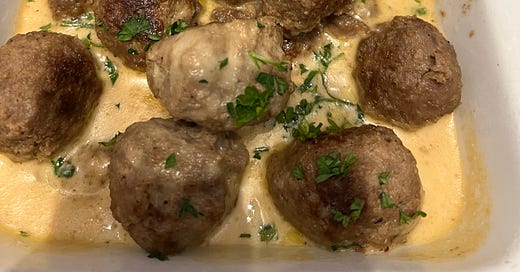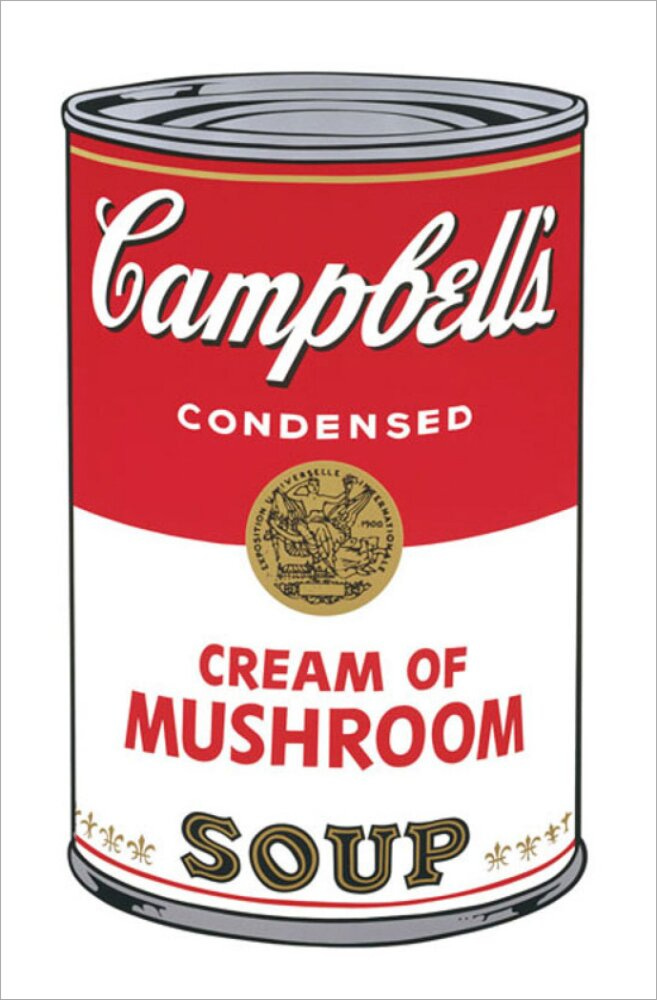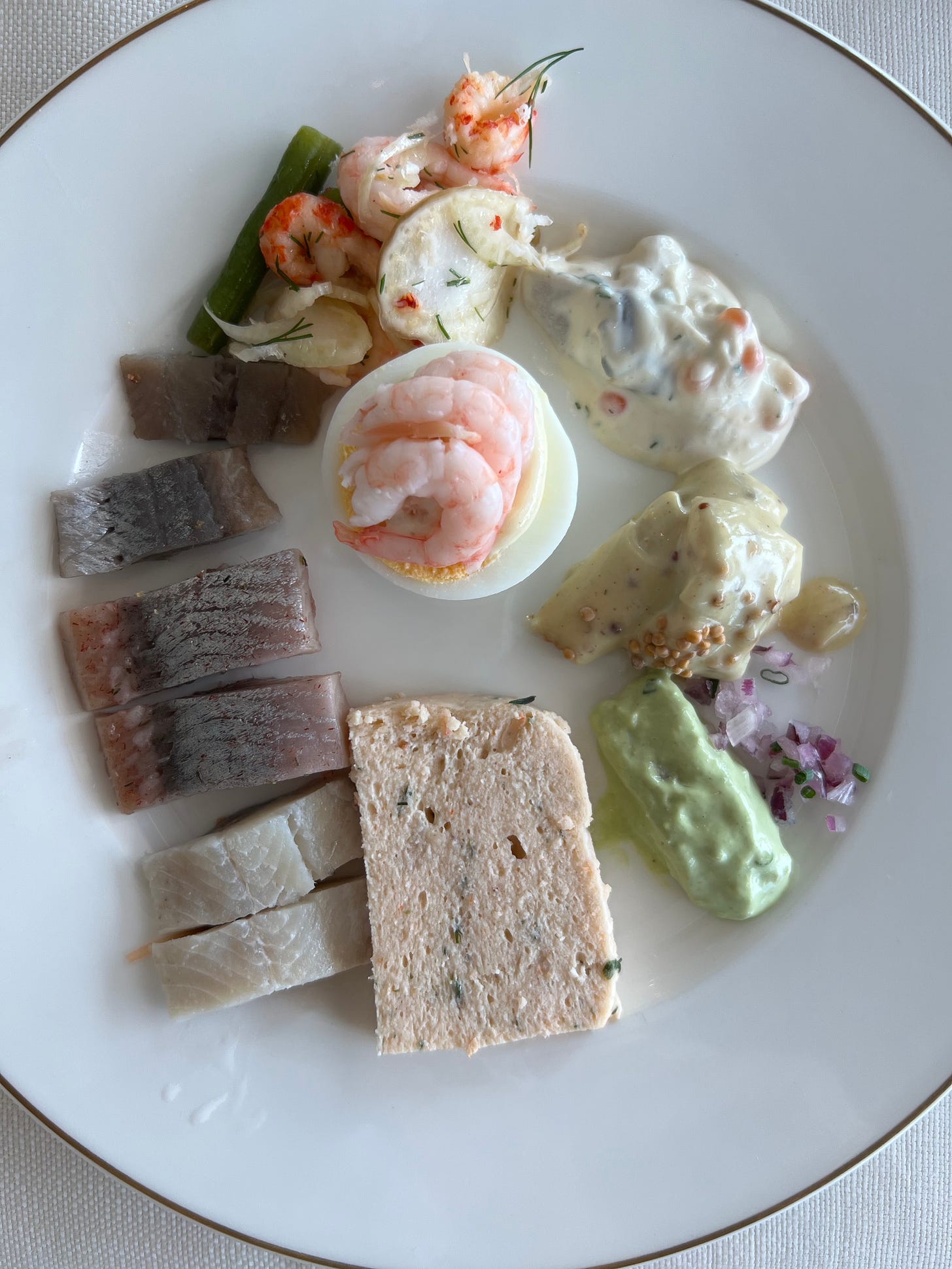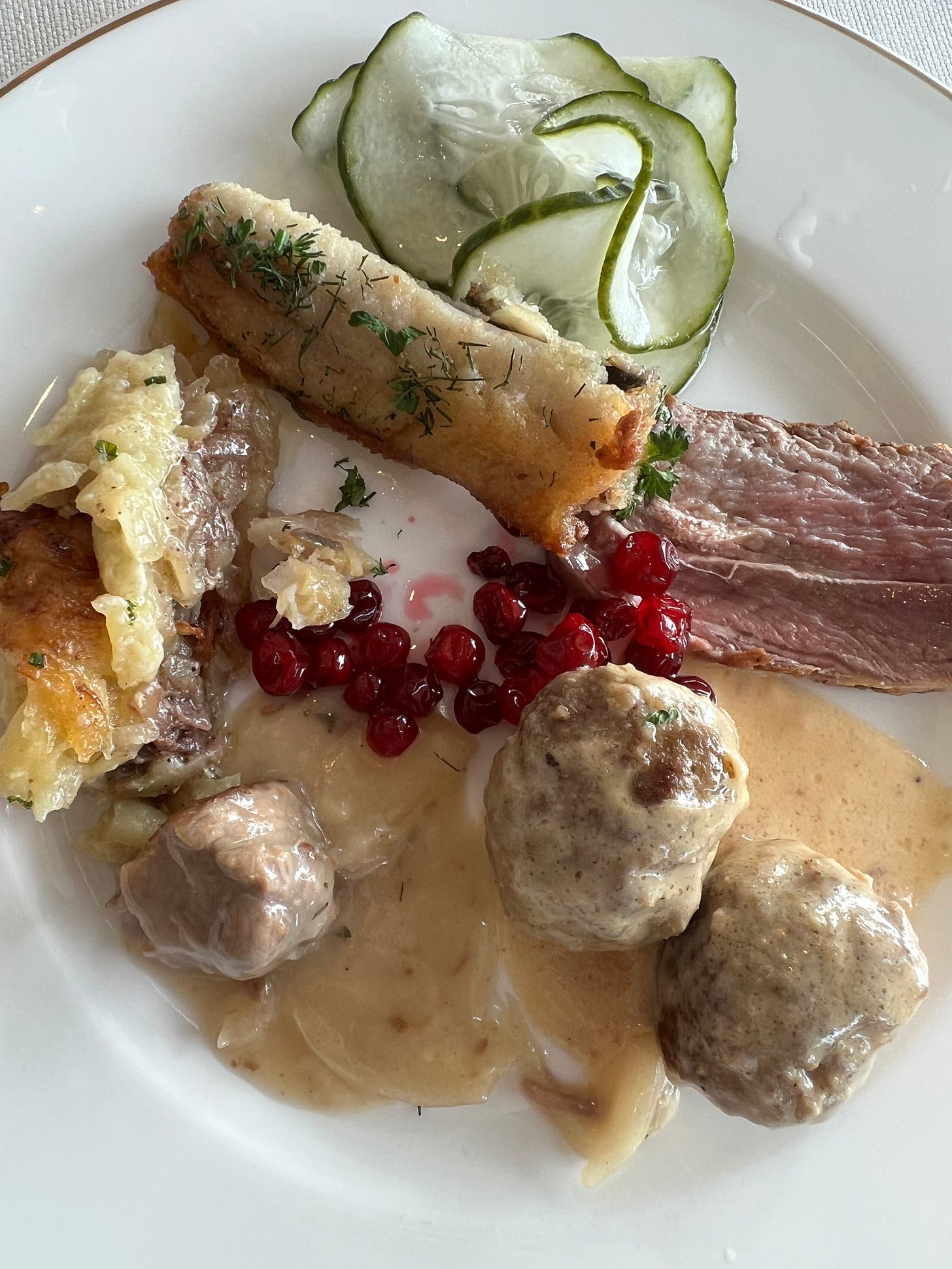Issue #105: Here, They Just Call Them "Meatballs"
Childhood Memories, Family Recipes, Smörgåsbord, and Swedish Meatballs
After two weeks on the road—Florida, Stockholm, London—I’m finally heading home. It’s been a long but inspirational journey for many reasons I’ll look forward to addressing in my writing. But boy am I ready to return. To see Nate and Milo, of course, but also to get back to the Union Square Greenmarket, which I’ve heard is in full bloom. I hate missing the change in produce from week to week at this time of year. In the meantime, remember there is still time to take advantage of my 100th Issue Special Offer ($45 annual subscription, plus a free, signed copy of my Kitchen Sense cookbook) before it ends on June 30. For details click on the button below. Thank you to all who have subscribed or upgraded. —Mitchell
It was March 1978. My mother was throwing a 50th birthday party for my father at our house in Toronto. You could tell it was a large, special event because there were tables set up in all of the rooms of the first floor, not just in the dining room. The buffet was positioned in the main living/dining area and I recall our den was turned into a bar. Although we helped with the preparations, after the party began and we said a few “hellos,” the children were banished upstairs.
On the menu were my mother’s fanciest dishes, which included her beloved stuffed chicken breasts. To make them, she boned the breasts herself rather than have the butcher do it because she wanted to keep the skin intact. She pounded the breasts lightly, seasoned them, and rolled them around a spoonful of stuffing—onion, celery, and shredded carrot, maybe mushrooms, sweated in a ton of butter and mixed with torn bread and egg. She pulled the skin taught over the roll so the chicken stayed moist while it cooked. She packed the breasts snuggly into one of her many Pyrex baking dishes and then—the secret—she spooned undiluted Campbell’s Cream of Mushroom soup over top. She made many pans worth of stuffed chicken breasts for that dinner. Baked until bubbly and browned, the chicken was creamy, salty, and delicious. To serve, my mother slid the glass baking dish into one of the footed silver Pyrex dish holders that she had in various shapes and sizes and set it on the buffet for all to enjoy.
For an appetizer, I recall she prepared another one of her specialties, “Swedish meatballs.” A dish not uncommon at the time, my mother’s recipe had you mix ground beef with grated onion, garlic powder, Worcestershire, egg, and a little grated potato. As she shaped tiny meatballs, she dropped them into a simmering sauce made simply by combining a jar of Heinz Chili Sauce and a jar of Welsch’s Grape Jam. What could be bad? For the birthday party she made an extra-large batch, which she set out in a chafing dish with plenty of Uncle Ben’s rice over which guests were instructed to spoon the meatballs.
We loved those Swedish meatballs, which had two irresistible characteristics: they were exotic and sweet. What did we know about Swedish food? All we knew about Scandinavia was that the sleek, teak furniture in our living and dining rooms came from that stylish northern land. For some reason, I recall that because of the subtle curves, distinctive wooden legs, and black leather details, everyone assumed all of our furniture was Danish. But my mother was proud to point out to those who said anything that a few pieces actually came from Sweden. Like her meatballs.
Imagine my surprise years later when, while traveling around Europe for the first time after my junior year abroad in Paris, I learned that meatballs in Sweden, though popular, are not sweet. Our Eurail trip detoured north because one of my traveling companion’s sisters had married a Swede and was living in a suburb of Stockholm. On that first visit to Scandinavia, in some restaurant somewhere, I ordered the famous Swedish meatballs I knew so well. While I had likely assumed Swedish meatballs in Sweden wouldn’t be made with ingredients from iconic American brands, such as Welch’s and Heinz, I thought they’d at least have something in common with my mother’s recipe. Nope.
My first truly Swedish meatballs came swimming in a savory brown gravy, beefy and rich. They weren’t sweet. They weren’t gloppy. There was no Uncle Ben’s. In fact, the only culinary antecedent to my mother’s meatballs I could find was the lingonberry jam served as a condiment on the side. But unlike her Welch’s, that jam was certainly not integral to the dish itself. We had been duped.
Stockholm is a city I love. I have since been back more than a half dozen times. Occasionally, I order meatballs, perhaps just to be sure I didn’t miss anything. I now know there are variations of Swedish meatballs in Sweden, too. Sometimes the gravy is enriched with cream. Other times it is simply thickened with a little flour. I’ve seen recipes that call for a tablespoon of apple sauce stirred in to lighten the taste. But I’ve never been served anything like those meatballs my mother passed off as Swedish.
Last week, while I was in Stockholm with a delegation of Israeli chefs to participate in several events to show off the dynamic culinary culture and food tech sector of Israel, at one point it came out that almost all of these young people I was with were herring lovers. It still surprises me how many Israelis of all ages seem to like herring, which I associate with elderly, accented Jewish men in New York and Florida. Herring is one of the few Ashkenazi foods that remains present in Israel’s contemporary culinary culture, which leans more toward the Mediterranean and the Middle East. (Chopped liver and matzo ball soup are two others.) I knew these cooks had to experience a true smörgåsbord to see all the varieties of herring on offer. So, I made a reservation for lunch the next day at Verandan in the Grand Hotel, one of the fanciest and best Swedish buffets around.
Verandan did not disappoint. We sat among the elegant, older Swedish crowd waiting patiently for the buffet to open in the sunny, glass-enclosed dining room. At exactly noon our server gave us the go ahead. On the smörgåsbord were so many varieties of herring (pickled, matjes, spiced, creamed with trout roe), and smoked fish (hot-smoked salmon, hot-smoked char, cold-smoked salmon, cured gravlax), it was hard to follow the instructions on our table to begin with just one plate of cold fish. It would take at least two to try them all. Shellfish aside, it never dawned on me before how Jewish a smörgåsbord seems. Substitute bagels for knäckebröd, take all the fish off elegant serving platters and arrange them in plastic tubs in a refrigerated display case, and you’ve got a an appetizing/bagel shop in New York. The Israeli chefs were in heaven. Me too.
But I was also drawn to the table of meats, where, of course, among the selection of roast beef, roast lamb (curiously labeled “lamb roast beef”) and chicken, I found a large platter of Swedish meatballs. The gravy on this version was enriched with cream. And the meatballs were garnished with chopped parsley. I put a few on my plate, and then a few more, a spoonful of lingonberries on the side. Still nothing like my mom’s Swedish meatballs, but they were delicious, nevertheless.
RECIPE: In Sweden They Just Call Them “Meatballs” (Not My Mother’s Version)
(Serves 4)
3/4 pound ground beef
1/4 pound ground pork or veal
1/4 cup panko bread crumbs
1 large egg
1/4 cup finely minced or grated onion or shallot
1 tablespoon finely minced parsley, plus additional for garnish
1/2 teaspoon garlic powder
1/4 teaspoon ground allspice
1/4 teaspoon freshly ground nutmeg
Salt
Freshly ground black pepper
2 tablespoons extra-virgin olive oil
1/4 cup (4 tablespoons) butter
3 tablespoons all-purpose flour
2 cups beef or other stock
1 cup heavy cream
1 tablespoon Worcestershire sauce
1 teaspoon Dijon mustard
1 teaspoon soy sauce or miso (optional)
To prepare the meatballs, in a medium-sized bowl combine the ground beef, ground pork or veal, panko, egg, onion, parsley, garlic powder, salt, allspice, nutmeg, and a generous grind or two of black pepper. Using a wooden spoon, mix until combined. Set aside. Line a plate with paper towel.
In a large, deep skillet, heat the olive oil. Wet your hands with cold water and roll the meat mixture into small balls, placing them into the hot pan to fry. Don’t compact them too tightly or they will be tough. You should get about 20 meatballs. Cook, turning continuously, until the meatballs are browned on all sides and cooked through. Transfer them to the paper towel and set aside. Pour off any excess oil or fat from the pan, but leave all the browned meat bits intact.
Add the butter to the skillet and melt over medium-high heat. Add the flour and stir to combine with the butter, scraping any bits off the pan, to make a roux. Once the roux begins to turn golden brown, slowly whisk in the beef broth and then whisk in the heavy cream. Add the Worchestershire sauce, Dijon, and soy or miso, if using, and bring to a simmer until the sauce starts to thicken. Season with salt and pepper to taste. Add the meatballs back to the skillet and simmer for another five minutes or so until heated through. Serve over rice.
Sadly, my father didn’t live to see his 51st birthday. He died of a massive stroke the following January. His memory lives on, if not all of the family recipes.








Chili sauce and grape jam!!! I'm glad you went with a more traditional Swedish Meatball recipe... but I'm quite intrigued by those beloved stuffed chicken breasts. They sound delicious!
Lovely memories, Mitchell. I think I could share some of them though my childhood was in Maine and several decades earlier. My favorite memory is the meatloaf made from Spam, saltine crackers, and canned corn. I have never been able to find a recipe but I confess I've not searched far nor wide.